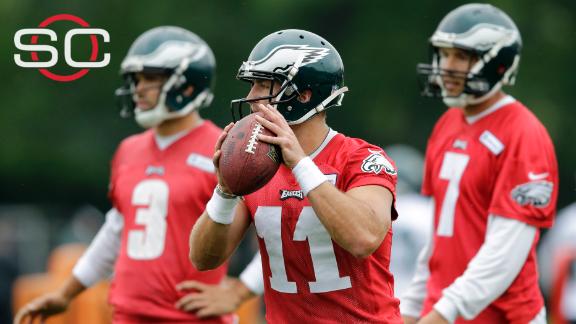 Lester Munson, Legal AnalystClose
Lester Munson, Legal AnalystClose- Senior Writer and Legal Analyst, ESPN.com
- 13 years as investigative reporter at Sports Illustrated
- Adjunct Instructor, Northwestern's Medill School of Journalism
- 0 Shares
- Comment
The NCAA's lead trial attorney scored big Monday when he pushed Ed O'Bannon into saying that Little League players should be paid if their games are on television. It was a statement that shows just how far-reaching a ruling in favor of allowing collegiate athletes to be paid could become.
But Glenn Pomerantz's most important move came at the trial's outset, when he stepped into a discussion between O'Bannon's attorneys and the judge who will decide the O'Bannon vs. NCAA lawsuit. O'Bannon's attorneys had just informed the judge that a settlement between video game maker Electronic Arts and a separate group of former players had been settled for $20 million.
Then Pomerantz pounced.
"This will allow us now to focus on the issues of live broadcasts and rebroadcasts," he said to Judge Claudia Wilken. She didn't respond, but, as the decision-maker in the case that will decide whether players should be paid for their names, likenesses and images in television broadcasts, video games and other consumer products, she no doubt understood his point.
Pomerantz sent Wilken a clear message that the names, likenesses and images issue had been decided by the just-announced settlement and that the O'Bannon case should now solely be about whether players should get paid for live television broadcasts and rebroadcasts.
Yet even with the risks to the NCAA from the names and likenesses claim effectively reduced, Pomerantz will continue to fight the issue as he did in his cross-examination of O'Bannon. Another NCAA attorney, Rohit Singla, will continue the effort when he cross-examines the players' expert economist, Roger Noll, on Tuesday.
But the NCAA will focus most of its effort on its attack on the players' demand for payment for television broadcasts. The NCAA might succeed.
In the longest section of its trial brief, the NCAA legal team explained in detail why the players could not collect anything for television broadcasts.
"There is simply no legal authority whatsoever for such a claim," the NCAA's attorneys write. The athletes "do not have that right because they do not create college football or basketball games or control the stadiums where they are played."
In a persuasive bit of legal rhetoric, the NCAA lawyers use the example of a Cal-Stanford football game, a contest that has been played 116 times since 1892. The players have no rights to sell to a television network that would broadcast the game because "Cal and Stanford have scheduled this game long before any of the athletes who will play in it have enrolled at either school. Cal and Stanford decide who can play in the game, march in the band, be part of the cheerleading squad, and buy tickets to enter the stadium."
As a practical matter, the lawyers argue, "Cal and Stanford have the power to keep every network out" other than the network contracted to broadcast the game.
The attorneys are relying on numerous legal precedents and statutes enacted in 13 states that prevent players from collecting on broadcasts of their games. The states include Texas, Oklahoma, Tennessee, Indiana and Pennsylvania, where college football is a serious business.
"The players cannot sell something that they do not own," the NCAA asserts, and "the rights they claim to have been restrained from licensing do not exist."
Noll, the expert economist who is critical to the players' case, testified for 2 hours, 10 minutes Monday but did not mention television broadcasts. There is more to come from Noll on Tuesday, but it would be a setback for the players if he did not try to offer some support for their claim on television broadcast payments.
It was no accident that Pomerantz made his statement in the opening moments of the trial Monday. He had no real role in the report of the EA settlement, but he intervened in the discussion to make it clear to the judge that the NCAA would have plenty to say on the players' claim that they are entitled to television money.








Custance: Sabres big winners after NHL draft
23hCraig Custance









Zack Greinke busts winless streak in phenomenal fashion
13hWalter Villa, Special to ESPN.com


Burnside: Top unrestricted free agents by position
3hScott Burnside


Pockrass: Busch a step closer to Chase
14hBob Pockrass
NCAA puts points on the board
6/10/2014